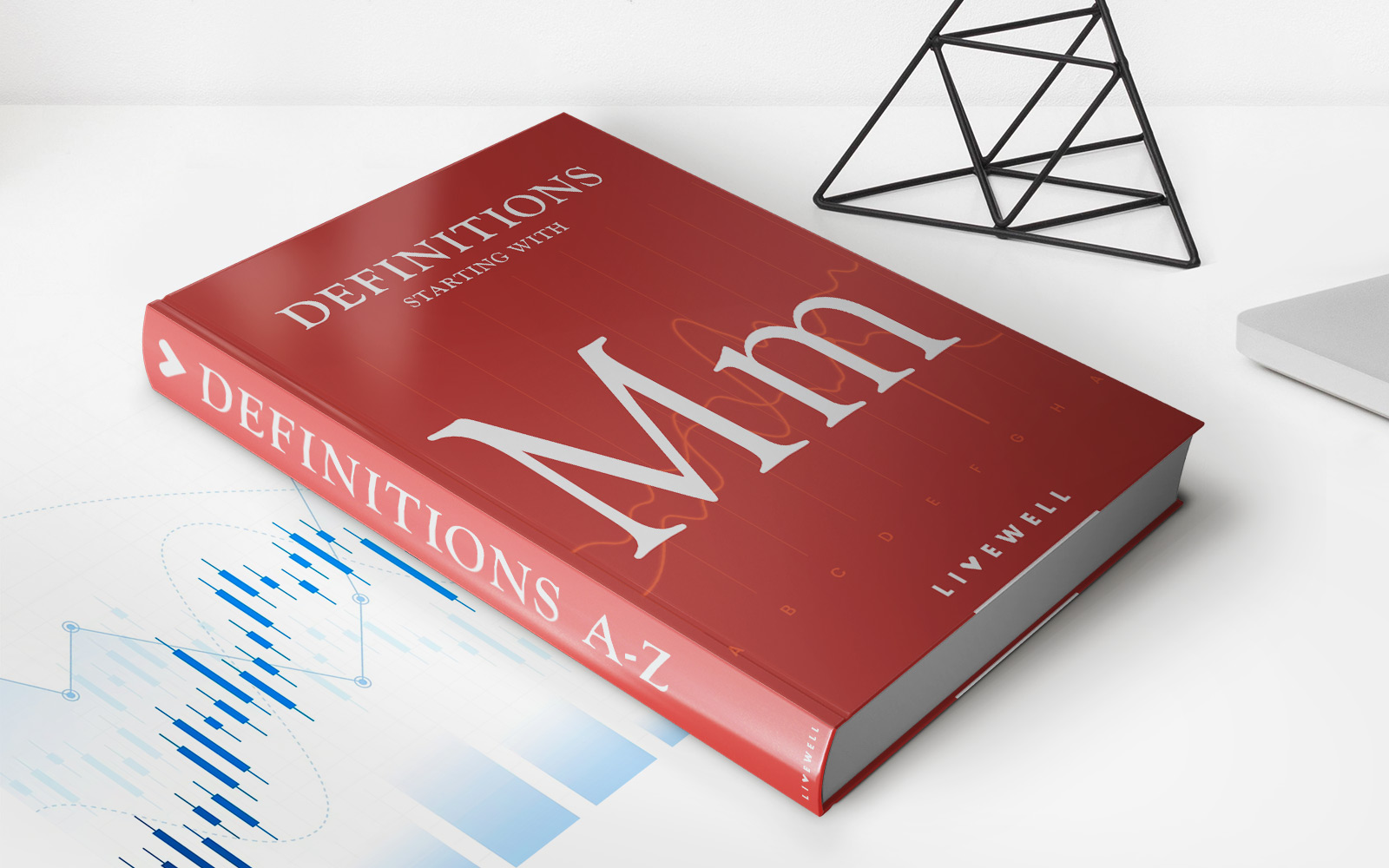Home>Finance>How Are Mutual Funds And Certificates Of Deposit Alike?


Finance
How Are Mutual Funds And Certificates Of Deposit Alike?
Modified: December 30, 2023
Discover the similarities between mutual funds and certificates of deposit in the world of finance. Explore the benefits and features of both investment options.
(Many of the links in this article redirect to a specific reviewed product. Your purchase of these products through affiliate links helps to generate commission for LiveWell, at no extra cost. Learn more)
Table of Contents
- Introduction
- Definition of Mutual Funds
- Definition of Certificates of Deposit (CD)
- Similarities between Mutual Funds and Certificates of Deposit
- Investment Purpose
- Risk Levels
- Potential Returns
- Diversification
- Access to Professional Management
- Liquidity
- Tax Implications
- Key Differences between Mutual Funds and Certificates of Deposit
- Investment Vehicle
- Minimum Investment Requirements
- Withdrawal Restrictions
- Investment Duration
- Interest Rates
- Conclusion
Introduction
When it comes to investing, there are various options available in the financial market. Two popular choices for individuals looking to grow their wealth are mutual funds and certificates of deposit (CD). Both offer distinct advantages and cater to different investment goals. Understanding the similarities and differences between mutual funds and certificates of deposit is essential in making informed investment decisions.
In this article, we will explore the key similarities and differences between mutual funds and certificates of deposit, their investment purpose, risk levels, potential returns, diversification, access to professional management, liquidity, and tax implications. By the end, you will have a comprehensive understanding of these investment vehicles and be better equipped to decide which option suits your financial goals.
Whether you are a seasoned investor or just starting out, having a grasp of these investment options is crucial to building a successful investment portfolio. So, let’s delve into the world of mutual funds and certificates of deposit and unravel their similarities and differences.
Definition of Mutual Funds
Mutual funds are investment vehicles that pool money from multiple investors and invest in a diversified portfolio of securities, such as stocks, bonds, and other assets. They are managed by professional fund managers, who make investment decisions on behalf of the investors.
When you invest in a mutual fund, you are essentially buying shares of the fund, and your returns are directly proportional to the performance of the underlying investments. Mutual funds come in various types and categories, catering to different investment objectives and risk tolerances.
One of the key advantages of mutual funds is that they allow even small investors to gain exposure to a diversified portfolio, which would otherwise be difficult or costly to achieve individually. Additionally, mutual funds provide access to professional investment management, which can be particularly beneficial for individuals who may not have the time, expertise, or resources to actively manage their investments.
Mutual funds offer flexibility in terms of investment amounts, allowing investors to start with relatively small sums of money. This makes it a popular choice among beginners who want to enter the investment world without a significant upfront capital requirement.
Investors in mutual funds earn returns in the form of capital gains, dividends, and interest income. These returns are distributed to the investors either in the form of cash or reinvested in the fund, depending on the investor’s preference.
It’s important to note that mutual funds are subject to market risks, and the value of the fund’s shares can fluctuate based on the performance of the underlying assets. This means that while mutual funds can offer the potential for substantial returns, they also carry a certain level of risk.
Definition of Certificates of Deposit (CD)
Certificates of Deposit (CD) are fixed-term financial instruments offered by banks and financial institutions. They are considered low-risk investments that offer a guaranteed rate of return over a specified period of time. When you purchase a CD, you are essentially lending your money to the issuing bank for a predetermined period, and in return, you receive a fixed interest rate.
CDs are known for their stability and safety, making them an attractive option for conservative investors or those looking to preserve capital. Unlike mutual funds, which are subject to market fluctuations, the principal investment in a CD is typically insured by the FDIC (Federal Deposit Insurance Corporation) up to $250,000 per depositor, per institution, ensuring the return of the initial investment.
CDs offer varying maturity periods, ranging from a few months to several years. The longer the duration of the CD, the higher the interest rate tends to be. It’s important to note that once you invest in a CD, you cannot withdraw your money before the maturity date without incurring penalties. The terms and penalties for early withdrawal vary depending on the issuing institution, so it’s essential to carefully review the terms before making a CD investment.
Unlike mutual funds, CDs do not provide the opportunity for capital appreciation or participation in the market’s ups and downs. Instead, investors earn a fixed interest rate on their principal, which is typically higher than what can be obtained from traditional savings accounts.
Certificates of Deposit are a suitable choice for investors who prioritize capital preservation, steady income, and a predictable return. They are often favored by individuals with short-term savings goals or those looking for a secure way to earn a modest return on their investment.
While CDs offer stability and predictability, they may not keep pace with inflation in the long run due to their lower potential returns. Therefore, investors with longer-term investment horizons or the desire for higher growth potential may need to explore other investment options.
Similarities between Mutual Funds and Certificates of Deposit
While mutual funds and certificates of deposit (CDs) differ in their structure and investment approach, there are several key similarities that make them both popular investment vehicles for individuals looking to grow their wealth. Let’s explore these similarities:
- Investment Purpose: Both mutual funds and CDs serve as investment options for individuals looking to earn a return on their savings. They provide avenues to grow wealth and generate income, although their strategies and risks differ.
- Risk Levels: Both mutual funds and CDs offer varying levels of risk. CDs are typically considered low-risk investments due to their fixed interest rates and FDIC insurance. Mutual funds, on the other hand, can range from low to high risk, depending on the underlying assets held in the fund’s portfolio.
- Potential Returns: Both mutual funds and CDs offer the potential for returns, although the nature of these returns differs. CDs provide fixed interest rates, ensuring a predictable return over the investment period. Mutual fund returns, on the other hand, are based on the performance of the underlying securities and can fluctuate, offering the potential for higher returns but also increased volatility.
- Diversification: Both mutual funds and CDs provide diversification benefits. Mutual funds achieve diversification by investing in a range of assets, such as stocks, bonds, and other securities. CDs, on the other hand, offer diversification within the context of the issuing institution as investors can hold multiple CDs with different maturity dates.
- Access to Professional Management: Both mutual funds and CDs offer access to professional management. Mutual funds are actively managed by professional fund managers who make investment decisions on behalf of the investors. CDs, although not actively managed, benefit from the stability and expertise of the issuing institution.
- Liquidity: Both mutual funds and CDs provide a level of liquidity; however, the liquidity terms differ. Mutual funds generally offer daily liquidity, allowing investors to buy or sell shares at the current net asset value. CDs, on the other hand, have a fixed term and may have penalties for early withdrawal, limiting their liquidity.
- Tax Implications: Both mutual funds and CDs have varying tax implications. Mutual funds are subject to capital gains taxes when securities within the fund are bought or sold. CDs, on the other hand, generate interest income that is taxable at the investor’s ordinary income tax rate.
Understanding the similarities between mutual funds and CDs is crucial in determining which investment option aligns with your financial goals and risk tolerance. While they may share certain characteristics, it is important to consider their unique attributes and differences to make an informed investment decision.
Investment Purpose
The investment purpose of mutual funds and certificates of deposit (CDs) can vary significantly, catering to different financial goals and risk preferences. Let’s explore how these investment vehicles serve distinct purposes:
Mutual Funds: Mutual funds are primarily designed for long-term investing and wealth accumulation. They provide investors with the opportunity to participate in the growth potential of a diversified portfolio of securities. The investment objective of a mutual fund can range from capital appreciation to income generation, and even a combination of both. Investors typically choose mutual funds to build wealth over an extended period, such as retirement planning or saving for a child’s education. The flexibility of mutual funds allows for different investment strategies and risk levels, enabling investors to align their choices with their financial objectives.
Certificates of Deposit: Certificates of Deposit, on the other hand, are commonly used for short- to medium-term savings goals. The primary purpose of investing in CDs is capital preservation and earning a fixed rate of return. CDs are often favored by individuals with conservative risk profiles who prioritize stability and predictability over the potential for higher returns. Investors may opt for CDs to accumulate funds for a specific financial goal, such as a down payment on a house or funding a vacation, knowing that their principal is safe and will earn a predetermined interest rate until maturity.
It’s important to note that the investment purpose of these vehicles can overlap in certain situations. For example, individuals may choose to include both mutual funds and CDs in their investment portfolio to achieve a balanced approach. They can allocate a portion of their investments to mutual funds for long-term growth potential and diversification, while utilizing CDs to protect and grow their short-term savings. Depending on an individual’s financial goals, risk tolerance, and time horizon, the investment purpose of these vehicles may vary.
Before making any investment, it is crucial to clearly define your investment purpose and align it with the appropriate investment option. Understanding your financial goals will help guide your decision-making process and ensure that your investment strategy is suited to achieve the desired outcomes.
Risk Levels
Risk is an inherent aspect of investing, and understanding the risk levels associated with different investment options is crucial in making informed decisions. Let’s compare the risk levels of mutual funds and certificates of deposit (CDs):
Mutual Funds: Mutual funds are subject to varying degrees of risk, depending on the types of assets held within the fund’s portfolio. Equity funds, which primarily invest in stocks, tend to carry higher levels of risk due to market fluctuations and company-specific risks. Bond funds, on the other hand, are generally considered less risky than equity funds, but still subject to interest rate and credit risks. Additionally, certain mutual funds, such as those investing in emerging markets or sector-specific funds, can carry higher levels of risk due to geopolitical factors or industry-related volatility. It’s important to note that while mutual funds offer the potential for higher returns, they also bring a certain level of volatility and market risk.
Certificates of Deposit: Certificates of Deposit are typically considered low-risk investments. When you invest in a CD, your principal is protected, and the interest rate is fixed for the duration of the investment. This stability and predictability make CDs an attractive option for conservative investors or those seeking capital preservation. However, one risk associated with CDs is inflation risk. Since the returns are fixed, they may not keep pace with inflation in the long run, meaning that the purchasing power of the investment may erode over time.
It’s important to note that while CDs have lower risk compared to certain mutual funds, they may yield lower returns as well. Mutual funds, with their potential for higher growth, have the potential for greater returns, but also come with a higher level of risk. The overall risk level of a mutual fund also depends on factors such as the fund’s investment objectives, asset allocation, and the expertise of the fund manager.
When considering the risk levels of mutual funds and CDs, it’s essential to assess your own risk tolerance and investment goals. If you have a higher risk tolerance and a longer investment horizon, mutual funds may be suitable for you. However, if you prioritize capital preservation and prefer a lower level of risk, CDs might be more appropriate. Evaluating your risk appetite will help determine the best investment option for your financial goals.
Potential Returns
The potential returns of an investment play a significant role in shaping an individual’s investment strategy. When comparing mutual funds and certificates of deposit (CDs), it is important to understand the potential returns offered by each:
Mutual Funds: Mutual funds offer the potential for higher returns compared to CDs. The returns on mutual funds are based on the performance of the underlying securities held within the fund’s portfolio. If the fund’s investments perform well, investors can benefit from capital gains, dividends, and interest income. However, it’s important to note that the returns of mutual funds are not guaranteed and can vary depending on market conditions and the fund manager’s investment decisions. Investing in mutual funds can provide an opportunity for long-term capital appreciation, making it a popular choice for those seeking higher growth potential.
Certificates of Deposit: Certificates of Deposit are known for their stability and predictable returns. The interest rates for CDs are fixed at the time of purchase and remain constant throughout the investment period. The returns on CDs are generally lower compared to mutual funds, but they come with a higher level of security. The fixed rate of return ensures that investors know exactly how much they will earn, providing a steady income stream. CDs are particularly favored by conservative investors who prioritize capital preservation and a reliable, predictable return.
It’s important to note that the potential returns of both mutual funds and CDs can be impacted by factors such as market conditions, interest rates, and the specific investments within the fund or CD. Additionally, past performance is not indicative of future results, so it’s essential to conduct thorough research and consider multiple factors when assessing the potential returns of an investment.
When choosing between mutual funds and CDs, it is crucial to align your investment goals and risk tolerance with the potential returns offered by each option. If you seek higher growth potential and are willing to take on more risk, mutual funds may be suitable. On the other hand, if you prioritize stability, capital preservation, and a known return, CDs can offer a reliable option. Balancing potential returns and risk is key to building a well-diversified investment portfolio.
Diversification
Diversification is a risk management strategy that involves spreading investments across various assets to reduce exposure to any single investment and enhance the overall stability of the portfolio. Both mutual funds and certificates of deposit (CDs) offer diversification benefits, albeit in different ways:
Mutual Funds: Mutual funds are designed to provide investors with diversification by investing in a wide range of assets such as stocks, bonds, and other securities. By pooling money from multiple investors, mutual funds allow access to a professionally managed, diversified portfolio. This diversification helps mitigate the risk of any individual investment performing poorly. Mutual funds provide exposure to a broader market, industry sectors, and geographic regions, which reduces the impact of any single security or economic event on the overall investment. Diversification within mutual funds helps to safeguard against significant losses and maximize potential returns by capitalizing on different market opportunities.
Certificates of Deposit: While CDs are not traditionally considered diversification tools due to their singular nature, investors can utilize CDs to achieve diversification within the context of the issuing institution. By holding CDs from multiple banks, investors can distribute their capital across different financial institutions, reducing the concentration risk associated with a single bank. This approach can provide additional security should one institution experience financial difficulties.
It’s important to note that even though mutual funds inherently offer diversification through their portfolio composition, it’s essential to assess the specific holdings and asset allocation of each mutual fund to ensure proper diversification. Different types of mutual funds carry different levels of diversification, and investors should consider their goals, risk tolerance, and desired level of diversification when selecting a mutual fund.
By diversifying their investments, individuals can potentially lower their overall risk and enhance the potential for steady returns. Diversification helps to minimize volatility and protect against the impact of any single investment underperforming. It also enables investors to take advantage of opportunities across different asset classes and market sectors. Whether through mutual funds or a diversified portfolio of CDs, investors should aim for a well-balanced approach to achieve their investment objectives.
Access to Professional Management
Access to professional management is an important consideration for investors, particularly those who may not have the time, expertise, or resources to actively manage their investments. Both mutual funds and certificates of deposit (CDs) offer different levels of professional management:
Mutual Funds: Mutual funds provide investors with access to professional management. These funds are actively managed by experienced fund managers who make investment decisions on behalf of the investors. Fund managers conduct extensive research, analyze market trends, and select a diversified portfolio of securities that align with the fund’s investment objectives. They actively monitor and adjust the portfolio, taking into account market conditions and investment strategies. Mutual funds’ professional management can be particularly valuable for investors seeking guidance and expertise in navigating the complexities of the financial markets.
Certificates of Deposit: Unlike mutual funds, CDs do not involve direct professional management. CDs are fixed-term investments that offer a predetermined interest rate over a specified period. The management aspect of CDs is primarily handled by the issuing financial institution, which ensures the safekeeping of the principal and pays out the agreed-upon interest at maturity. While CDs do not offer active management, they benefit from the stability and expertise of the issuing institution. Investors can rely on the reputation and financial strength of the institution to ensure the safety of their investment.
Access to professional management through mutual funds can be advantageous for individuals who prefer to delegate investment decisions to experts. The fund managers’ expertise allows for strategic asset allocation, stock selection, and risk management. This level of professional management can provide peace of mind and save time for investors who may not have the knowledge or inclination to actively monitor and manage their investments.
On the other hand, CDs provide a more hands-off approach to investing, allowing individuals to take a passive role in managing their investments. While CDs do not involve active management, they offer a straightforward and reliable investment option for those seeking stability and a predictable return on their investment.
Investors should consider their preference for professional management, their comfort level in making investment decisions, and their desired level of involvement when deciding between mutual funds and CDs. It’s important to align the investment approach with personal financial goals and risk tolerance to make informed investment decisions.
Liquidity
Liquidity refers to the ease with which an investment can be bought or sold without causing significant price movement. It is an important factor for investors who may need access to their funds in the short term. Let’s compare the liquidity of mutual funds and certificates of deposit (CDs):
Mutual Funds: Mutual funds provide a certain level of liquidity to investors. They are generally considered to be more liquid compared to CDs. Mutual funds are open-ended investment vehicles, meaning that investors can typically buy or sell fund shares on any business day at the current net asset value (NAV). This allows investors to have flexibility in accessing their investments when needed. However, it’s important to note that while mutual funds provide daily liquidity, the actual settlement of funds may take a few business days.
Certificates of Deposit: CDs, on the other hand, are known for being less liquid compared to mutual funds. When you invest in a CD, you commit to keeping your funds invested for a specified period, known as the CD’s maturity. Breaking a CD before its maturity can result in penalties, including the loss of earned interest. While some institutions may offer the option to redeem a CD before maturity, it often comes with restrictions and fees. Therefore, CDs are generally considered to have lower liquidity compared to mutual funds.
It’s important to consider your financial situation and liquidity needs when deciding between mutual funds and CDs. If you anticipate needing access to your investments in the short term or require flexibility in making withdrawals, mutual funds may be a more suitable choice. However, if you have a longer investment time frame and do not foresee the need for immediate access to your funds, CDs may still be a viable option.
Having a diversified investment portfolio that includes both liquid and less liquid assets can help strike a balance between accessibility and potential returns. By considering your liquidity requirements alongside your investment goals, risk tolerance, and time horizon, you can make informed decisions on how to allocate your funds.
Tax Implications
Tax implications are an important consideration when it comes to investing. Both mutual funds and certificates of deposit (CDs) have distinct tax treatments that investors should be aware of:
Mutual Funds: Mutual funds generate taxable events that can impact an investor’s tax liability. When securities within a mutual fund are bought or sold, it may result in capital gains or losses. If such gains are realized, investors are typically subject to capital gains taxes. The tax treatment of these gains depends on various factors, including the holding period of the investment. Additionally, mutual funds may also distribute dividends, which are taxable as ordinary income. It’s important to note that even if an investor chooses to reinvest dividends, the tax liability still applies. Different types of mutual funds have different tax implications, and it’s advisable to consult a tax professional to fully understand the tax implications specific to your situation.
Certificates of Deposit: The interest income earned from CDs is subject to taxes. The interest accrued on CDs is generally considered taxable at the investor’s ordinary income tax rate. When you receive interest income from a CD, the issuing institution will typically issue a Form 1099-INT to report the taxable amount. It’s important to accurately report this income on your tax return to comply with tax laws.
Both mutual funds and CDs offer certain tax advantages as well. For example, investing in tax-exempt or tax-efficient mutual funds may result in lower taxes for investors. Additionally, CDs held in tax-advantaged accounts, such as Individual Retirement Accounts (IRAs) or Health Savings Accounts (HSAs), may provide tax benefits based on the specific account type and applicable tax rules.
Understanding the tax implications of your investment choices is crucial in managing your overall tax liability and maximizing your after-tax returns. It is always advisable to consult with a qualified tax professional or financial advisor who can guide you in making investment decisions that align with your tax strategy.
Keep in mind that tax laws and regulations can change over time, so it’s essential to stay informed and regularly review your investment portfolio to ensure compliance with the latest tax requirements.
Key Differences between Mutual Funds and Certificates of Deposit
While mutual funds and certificates of deposit (CDs) are both investment options, they differ in several key aspects. Understanding these differences can help investors make informed decisions that align with their financial goals and risk tolerance. Let’s explore the key differences between mutual funds and CDs:
- Investment Vehicle: Mutual funds are investment vehicles that pool money from multiple investors to invest in a diversified portfolio of securities. CDs, on the other hand, are fixed-term deposits offered by banks or financial institutions.
- Minimum Investment Requirements: Mutual funds typically have minimum investment requirements, which can vary depending on the fund. These requirements range from a few hundred dollars to several thousand dollars. CDs, on the other hand, often have higher minimum investment requirements compared to mutual funds. They typically require a minimum deposit amount, which can vary depending on the issuing institution and the specific CD.
- Withdrawal Restrictions: Mutual funds generally allow investors to buy or sell shares on any business day at the current net asset value (NAV). There are typically no withdrawal restrictions, except for potential redemption fees or short-term trading fees imposed by the fund. CDs, however, have fixed terms and withdrawal restrictions. Investors commit to keeping their funds invested for a specific period, known as the CD’s maturity. Withdrawing funds from a CD before maturity may result in penalties, including the loss of earned interest.
- Investment Duration: Mutual funds do not have specific investment durations and can be held indefinitely, allowing investors to choose their desired investment time frame. CDs, on the other hand, have fixed terms that can range from a few months to several years. The investment duration for a CD is predetermined at the time of purchase.
- Interest Rates: Mutual funds do not offer fixed interest rates. Instead, their returns are based on the performance of the underlying securities. CDs, on the other hand, offer fixed interest rates that are determined at the time of purchase. These rates remain constant throughout the investment period.
Considering these key differences, mutual funds are more flexible investment options that offer a diversified portfolio and the potential for higher returns. They are suitable for those seeking long-term growth and are comfortable with the inherent market risks associated with investments. Conversely, CDs provide a predictable and stable rate of return, making them appealing to conservative investors who prioritize capital preservation and prefer lower risk. CDs are better suited for short-term savings goals or individuals who have a specific timeframe in mind for their investment.
Both mutual funds and CDs have their advantages and drawbacks, and the choice between the two will ultimately depend on an individual’s financial goals, risk tolerance, and liquidity needs. Investors may also consider diversifying their portfolio by including both mutual funds and CDs to strike a balance between growth potential and stability.
Investment Vehicle
One of the key differences between mutual funds and certificates of deposit (CDs) lies in their nature as investment vehicles. Let’s explore the distinct characteristics of each:
Mutual Funds: Mutual funds are investment vehicles that pool money from multiple investors to create a diversified portfolio of securities. They are managed by professional fund managers who make investment decisions on behalf of the investors. When individuals invest in a mutual fund, they are essentially purchasing shares of the fund, with their returns directly linked to the performance of the underlying investments. Mutual funds can invest in a wide range of assets, including stocks, bonds, money market instruments, and other securities. By offering access to diversified portfolios, mutual funds provide investors with the opportunity to participate in various sectors, regions, and asset classes. An added benefit of mutual funds is the ability to obtain professional management and expertise, making them suitable for individuals who prefer a hands-off approach to investing or lack the knowledge and time to manage investments themselves.
Certificates of Deposit: Certificates of Deposit, on the other hand, are fixed-term deposits offered by banks and financial institutions. When individuals invest in CDs, they are essentially lending their money to the issuing institution for a specific period, known as the CD’s maturity. CDs are considered fixed-income investments and are often regarded as low-risk options. They provide a guaranteed interest rate over the investment term, and the principal is typically insured by the FDIC up to $250,000 per depositor, per institution. CDs offer investors a predictable and stable rate of return, making them suitable for those seeking capital preservation and a known outcome. CDs have specific terms ranging from a few months to several years, and the interest rate is determined at the time of purchase. This fixed maturity period distinguishes CDs as a specific investment vehicle with a defined timeframe and predetermined conditions.
Understanding the nature of these investment vehicles is essential in selecting the appropriate option for your financial goals. Mutual funds provide the opportunity for long-term growth and diversification, offering exposure to a variety of investment options. On the other hand, CDs prioritize stability and preservation of capital, making them suitable for short-term savings goals or individuals who value a fixed return on their investment.
Ultimately, the choice between mutual funds and CDs depends on your investment goals, risk tolerance, time horizon, and liquidity needs. It’s important to carefully consider these factors and evaluate the features and benefits of each investment vehicle before making your investment decisions.
Minimum Investment Requirements
The minimum investment requirements differ between mutual funds and certificates of deposit (CDs) and can play a role in determining the accessibility of these investment options for investors. Let’s explore the minimum investment requirements associated with each:
Mutual Funds: Mutual funds typically have minimum investment requirements, which can vary depending on the fund and the investment firm offering it. The minimum investment can range from a few hundred dollars to several thousand dollars. Some mutual funds have lower minimums to accommodate investors with limited funds, while others may have higher minimums for certain funds that require a larger initial investment. The minimum investment requirement ensures that the fund can effectively manage the assets and cover administrative costs. It’s worth noting that once an investor meets the initial minimum investment, subsequent investments into the fund may have lower or no minimum requirements. This flexibility allows investors to contribute additional funds as they see fit.
Certificates of Deposit: Certificates of Deposit typically have higher minimum investment requirements compared to mutual funds. The minimum deposit for a CD varies depending on the issuing financial institution and the specific CD being offered. The minimum deposit for CDs can range from several hundred dollars to several thousand dollars. The higher minimum requirement is set by the institution to ensure that adequate capital is available to generate interest income. Investors should consider the minimum deposit requirement when deciding to invest in a CD, as it may impact the amount of money they need to commit upfront.
It’s worth mentioning that larger investment firms may offer mutual funds that have lower minimum investment requirements, making them accessible to a broader range of investors. Some mutual funds may also have special share classes that cater to different types of investors, including those with smaller initial investment amounts. This allows individuals with limited funds to participate in the mutual fund market, potentially benefiting from the diversification and professional management that mutual funds offer.
When considering your investment options, it’s important to assess your financial situation, budget, and investment goals. Make sure to evaluate the minimum investment requirements to determine which investment option aligns with your ability and willingness to invest.
Regardless of the minimum investment requirement, it’s generally recommended to invest an amount that aligns with your long-term financial plan and risk tolerance. Conduct thorough research and consult with a financial advisor to ensure that your investment decisions are in line with your overall financial goals.
Withdrawal Restrictions
Withdrawal restrictions are an important consideration when comparing mutual funds and certificates of deposit (CDs). These restrictions determine how easily and when investors can access their funds. Let’s explore the withdrawal restrictions associated with each:
Mutual Funds: Mutual funds generally offer more flexibility when it comes to withdrawals. Investors can buy or sell mutual fund shares on any business day at the current net asset value (NAV), making them more liquid than CDs. There are typically no specific withdrawal restrictions, with the exception of potential redemption fees or short-term trading fees imposed by the fund. However, it’s important to note that while mutual funds provide daily liquidity, settlement of the funds may take a few business days to process, depending on the fund and the investor’s brokerage account.
Certificates of Deposit: CDs, on the other hand, have specific withdrawal restrictions. When investing in a CD, individuals commit to keeping their funds invested for a predetermined period, known as the CD’s maturity. Withdrawing funds from a CD before its maturity date usually incurs penalties, which can include the loss of earned interest and potential fees. The penalties for early withdrawal vary depending on the issuing institution and the specific terms of the CD. Some institutions may offer the option to withdraw funds before maturity, but it often comes with restrictions and fees.
It’s important for investors to carefully consider their liquidity needs when choosing between mutual funds and CDs. If access to funds is a priority, mutual funds may be a more suitable option due to their daily liquidity. Investors can easily buy or sell shares, allowing for flexibility and immediate access to their funds. However, it’s important to keep in mind that the actual settlement of mutual fund transactions may take a few days, so funds may not be immediately available for withdrawal.
On the other hand, CDs are better suited for individuals who have a specific timeframe in mind for their investment and can meet the stated maturity without requiring access to the funds. CDs provide a predictable and stable return, but they come with the trade-off of limited liquidity until the maturity date.
Investors should consider their financial goals, time horizon, and liquidity needs when deciding between mutual funds and CDs. If the ability to withdraw funds without penalties or restrictions is important, having a portfolio that includes liquid investments, such as mutual funds, may better suit their needs. However, if funds can be locked away for a specific period, CDs can provide a predictable return with the understanding of the restricted access until maturity.
Investment Duration
The investment duration is an important consideration when comparing mutual funds and certificates of deposit (CDs). It refers to the length of time an investor commits their funds to a particular investment. Let’s explore the differences in investment duration between mutual funds and CDs:
Mutual Funds: Mutual funds do not have specific investment durations. Investors have the flexibility to hold mutual fund shares for as long as they desire. They can choose to stay invested for a short period or continue their investment indefinitely. This makes mutual funds suitable for individuals with varying investment goals and time horizons. Some investors may choose to hold mutual funds for many years or even decades, while others may have shorter-term investment objectives.
Certificates of Deposit: On the other hand, CDs have fixed investment durations. When investing in a CD, individuals commit to keeping their funds invested for a specific period, known as the CD’s maturity. CDs typically have maturity periods that range from a few months to several years, depending on the specific CD and the issuing financial institution. The investment duration is predetermined at the time of purchase and cannot be changed. Investors should carefully consider their financial goals and time horizons when choosing a CD with an appropriate maturity period.
The contrasting investment durations of mutual funds and CDs cater to different investment objectives. Mutual funds offer flexibility for investors who may have varying time horizons for their investments. They can be an attractive option for long-term investors looking to build wealth over an extended period. Additionally, investors can buy or sell mutual fund shares at any time, providing the opportunity to adjust their investment strategy as needed.
CDs, with their fixed investment durations, are better suited for individuals with specific financial goals that align with the maturity period of the CD. They provide a reliable and predictable return, making them appealing for short-term savings goals or individuals who have a specific timeframe in mind for their investments.
When considering investment duration, it’s important to align your investment choice with your financial goals, time horizon, and liquidity needs. Evaluate your investment objectives and determine whether a flexible investment duration, as offered by mutual funds, or a fixed duration, as offered by CDs, is more appropriate for your financial situation. Diversification within your investment portfolio can also help balance investment durations and cater to various goals and time horizons.
Interest Rates
Interest rates play a crucial role in determining the potential returns and attractiveness of investment options. When comparing mutual funds and certificates of deposit (CDs), it’s essential to understand their differences in terms of interest rates:
Mutual Funds: Mutual funds do not offer fixed interest rates. The returns of mutual funds are determined by the performance of the underlying securities held within the fund’s portfolio. If the securities in the fund appreciate in value, investors can benefit from capital gains. Additionally, some mutual funds distribute dividends and interest income generated by the securities in the portfolio. These returns can fluctuate depending on the market conditions, the fund’s investment strategy, and the success of the underlying assets. The potential returns of mutual funds are not fixed, and investors should be prepared for the possibility of experiencing periods of volatility and fluctuations in their investment value.
Certificates of Deposit: CDs, on the other hand, offer fixed interest rates. When investing in a CD, individuals agree to lock in their funds for a predetermined period at a specified interest rate. The interest rate for a CD is determined at the time of purchase and remains constant throughout the investment period. This fixed rate of return provides predictability and stability to CD investments. Investors know in advance exactly how much interest they will earn over the CD’s duration. However, it’s important to note that fixed interest rates may not keep pace with inflation in the long run, potentially affecting the purchasing power of the investment.
The differing interest rate structures of mutual funds and CDs reflect their distinct characteristics and appeal to different investor preferences. Mutual funds, with their potential for higher returns, attract investors who are willing to accept market fluctuations and seek long-term growth opportunities. CDs, with their fixed interest rates, are favored by conservative investors who prioritize stability, capital preservation, and a predictable return on their investment.
When considering interest rates, investors should also assess their investment goals, risk tolerance, and time horizon. Mutual funds offer the potential for higher growth but come with market risk, while CDs provide a fixed rate of return but may not offer the same growth potential. Additionally, investors may need to take into account their liquidity needs, as mutual funds typically offer more immediate access to funds compared to CDs.
Ultimately, the choice between mutual funds and CDs regarding interest rates depends on individual preferences, investment objectives, and risk appetite. It’s important to weigh the pros and cons of each option and align them with your financial goals to make informed investment decisions.
Conclusion
When it comes to investing, mutual funds and certificates of deposit (CDs) each offer unique benefits and characteristics. Understanding the similarities and differences between these investment options is crucial in determining which one aligns with your financial goals, risk tolerance, and investment preferences.
Mutual funds provide the opportunity for long-term growth, diversification, and access to professional management. With their diversified portfolios and potential for higher returns, mutual funds are suitable for investors seeking capital appreciation and who are comfortable with market volatility. They offer flexibility in terms of minimum investment requirements and liquidity, allowing investors to adjust their positions as needed.
On the other hand, CDs offer stability, capital preservation, and predictable returns. With fixed interest rates and defined investment durations, CDs are suitable for individuals looking for a conservative investment option. They provide a known rate of return over a specific period, appealing to investors who have short-term savings goals or prefer a low-risk approach. However, CDs come with some withdrawal restrictions and may not offer the same growth potential as mutual funds.
Ultimately, the choice between mutual funds and CDs depends on your unique financial situation and investment objectives. Consider factors such as your time horizon, liquidity needs, risk tolerance, and desired level of involvement in managing your investments.
It’s important to note that diversifying your investment portfolio is often a wise strategy, and you can choose to include both mutual funds and CDs to strike the right balance. By diversifying, you can potentially benefit from the growth potential of mutual funds while maintaining stability with CDs.
Whichever investment option you choose, make sure to conduct thorough research, consult with a financial advisor if needed, and monitor your investments regularly. Stay informed about market conditions and changes in interest rates to make informed decisions that align with your financial goals.
Remember, investing involves risks, and it’s important to evaluate your risk tolerance and investment objectives before committing your funds. By carefully assessing your options, you can make informed choices that help you build a diversified and balanced investment portfolio tailored to your financial goals and circumstances.














